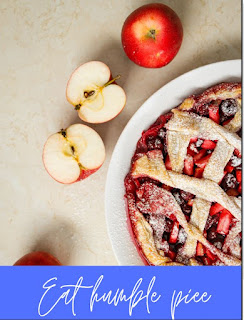https://view.genial.ly/62717583cc5de20018845354/guide-guia-pasos-nutricionales
Shared by Petrina Moir, teacher trainer.
Click on the image above to accesso to the presentation of the course: activities, resources, crafts, recipes, classroom ideas...
LEARNING
(ENGLISH) BY COOKING PLAN which you will find in the Genially above:
Throughout the session students will be participating in gamification activities for final cooking challenge.
Download the gamification cards here.
Hold onto your Hat
A visual activity
incorporating arts and crafts in order to create a chef´s hat.
The video can be used in different manners in order to implement in the classroom.
Students
could reiterate instructions through writing or even create an audio exercise.
Smart Cookies
Video-Listening
activity regarding the origin of the fortune cookie.
Listeningcomprehension questions.
Creative writing
and craft activity where students create their own cookies using origami paper
and also have to include a proverb or phrase.
Life is a box of chocolates
Reading comprehension and vocabulary exercise.
Reading comprehension: students' worksheet
Students will analyse reading extractfrom Roald Dahl´s novel BOY.
The activity will entail flipped lesson with students
creating comprehension questions as well as lexical analysis of synonyms and
word formation.
These Cadbury chocolate varieties were used in the activity, many of them sold in bogs of bits: Cadburys Wispa, Cadburys flake,Cadburys double decker, Cadburys crunchie, Cadburys caramel, Cadburys Turkish delight.
You can use any variety of chocolates that you find in your local supermarket.
More activities based on Boy, by Roald Dahl.
Bite off more than you can chew
Vocabulary:Language analysis of adjectives/adverbs.
Students will participate in tasting test of
typical British chocolates and will be required to complete questionnaire using
said adjectives. As a further activity students will be matching product
packaging with samples. Product analysis and marketing techniques.
A piece of cake
Language syntax
and comprehension. Students will have to reorder recipe and directions.
Hands on
experiment using different ingredients and dietary requirements.
Finger in the
pie
Oral expression. Students will face the challenge of identifying different foods/spices using four of the senses. Taste, sight, touch and smell. Students will get the opportunity to discover new ingredients, familiarise themselves with different cuisines in English speaking countries while also verbalising these in English.
This activity is a project on its own: access to it here.
A Picnic short of a sandwich
Listening activity and discussion.
Students will discover the origin of the sandwich and a discussion will take place regarding other cultures and influences.
Writing activity, creating a recipe
method and listening activity executing instructions.
Too many cooks spoil the broth
Cooking challenge. Practical challenge where students are required to fulfil the specifications of their challenge card.
Download the challenge cards here.
Preparing two dishes for Afternoon Tea. They must devise and elaborate the dishes created for an Afternoon Tea with the Queen.
Classic scone recipe for the afternoon tea:
Communication
skills and teamwork. Also we will
discuss sustainability and waste management.
CLASSROOM DECORATION
POSTERS FOR THE CLASSROOM: SAYINGS ABOUT FOOD
Click here to access to these posters:
POSTERS FOR THE CLASSROOM: SAFETY & HYGENE IN THE KITCHEN
Click here to access to these posters:
Participants of the courses:
LEARNING ENGLISH BY COOKING PRIMARY & SECONDARY 2022















